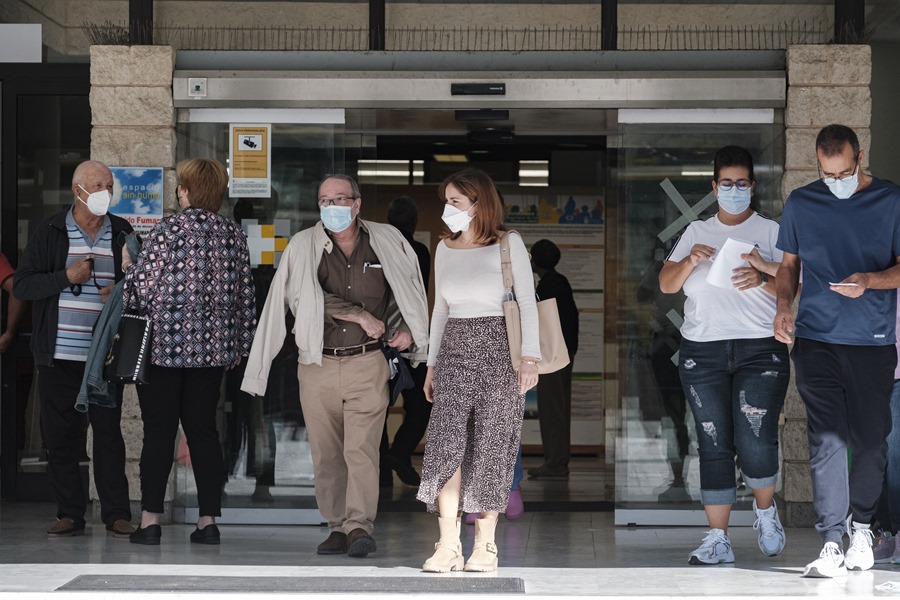
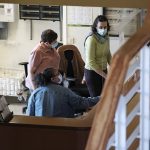
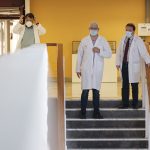
Madrid (EFE).- The Public Health Commission evaluates this Thursday the Ministry of Health’s proposed measures to face the next season of respiratory infections, among which it proposes a gradual tightening of the use of masks based on four risk scenarios.
The draft with which Health will try to reach the consensus of all the communities in the Public Health Commission aims to “guarantee coordination between the territories” this fall and winter when the circulation of covid-19, flu or Respiratory syncytial virus overlaps ( RSV), although it emphasizes that its prevention and control must be “relevant” throughout the year.
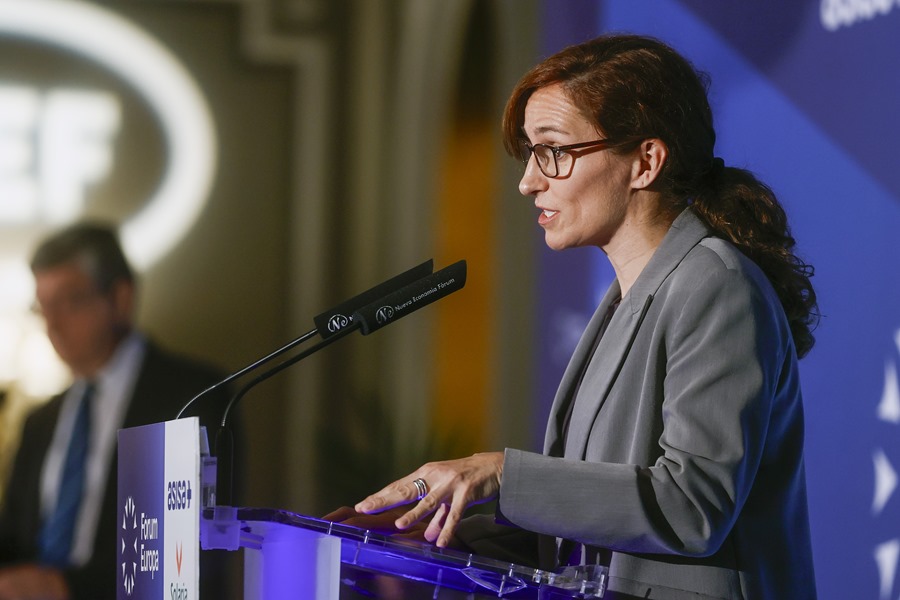
However, it opens the door for each community “to implement as many complementary measures as it considers appropriate” depending on its situation, which is grouped into four risk scenarios: 0, 1, 2 and 3 or “very high” risk or even “pandemic”, in which “the adoption of “additional and exceptional actions that will be implemented in accordance with specific regulations” may be assessed.
The regional general directors attend
The regional general directors attend the meeting with the aim of listening to and evaluating the Ministry’s approach, according to what the different ministries have responded to EFE.
From Health, the minister, Mónica García, already warned last week that she would be “vigilant” to ensure that the recommendations are complied with “in a timely manner” to avoid a repetition of “the chaos” that occurs every year in the health system and not having to “intervene” again as it did this winter by decreeing the mandatory nature of masks in health centers.
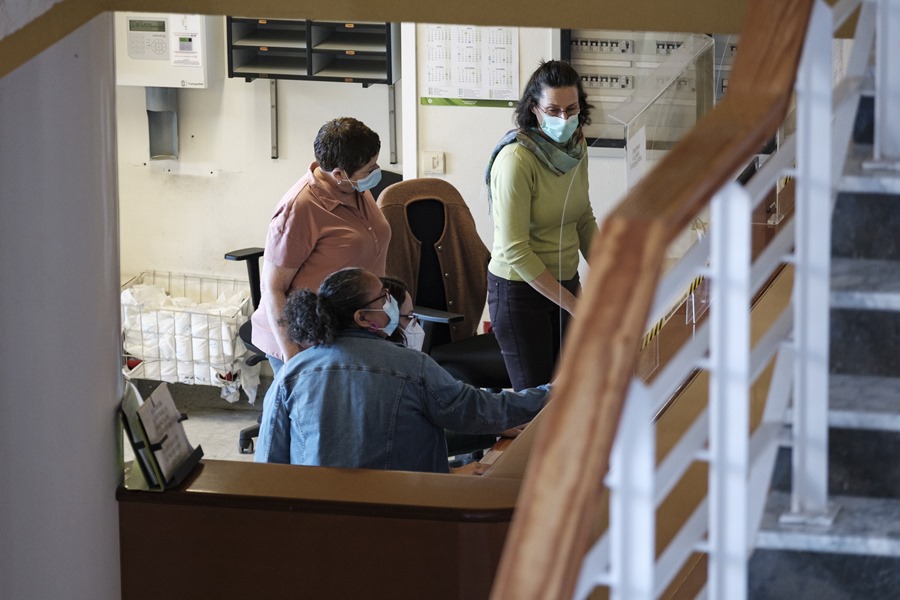
The four scenarios that the Ministry is considering will be classified according to a series of indicators – incidence rate, hospitalization, bed occupancy or ICU admissions, among others – that will be reviewed weekly.
Each one involves a battery of actions, but Health considers that some should be common to all of them, among them, recommending the surgical mask and self-isolation if you have symptoms.
Use of masks
The mask is restricted to those over 6 years of age, except for those who have “some type of illness or respiratory difficulty” that may be aggravated by the mask or who, due to their disability or dependency, do not have the autonomy to remove it. Nor will it be advised when “it is incompatible with the nature of the activities being carried out.”
Other prevention recommendations should apply throughout the season, such as vaccination, hygiene, “especially” hand hygiene; prioritize outdoor spaces, avoid crowds and properly ventilate spaces.
It also advocates reviewing and disseminating the contingency plans of healthcare and socio-health centers to deal with an increase in cases that “guarantee continuity of care.”
Scenarios and recommendations
From there, the document specifies more specific measures for each scenario, ranging from promoting teleworking to the recommended mask when you have symptoms, for workers in residential centers or for everyone in vulnerable areas of health centers such as treatment rooms. chemotherapy or transplant units.
When the risk level is high (Scenario 2), the recommendation will be expanded to people “whose occupations bring them into extensive face-to-face contact with the public” as long as they interact with people with compatible symptoms or confirmed cases.
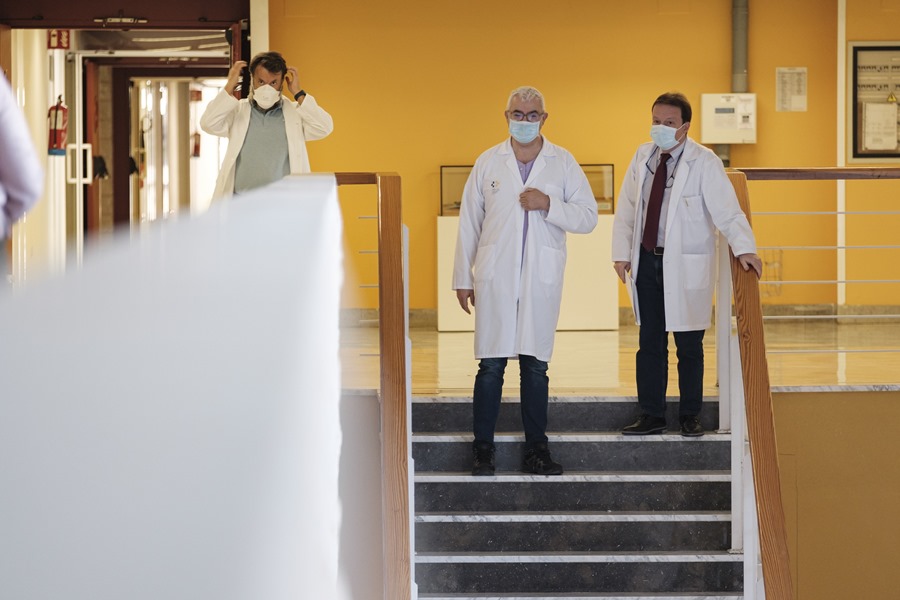
Likewise, people at risk will be “actively” recommended in supermarkets, shops and public transportation, cinemas, theaters, concert halls, gyms, dance halls or large outdoor events and on a “permanent” basis to all employees of “ vulnerable areas”, but not to patients or residents, “assessing its obligation in a general manner or in centers that are determined according to their specific situation and vulnerability.”
In health centers it will become “indicated” for both workers and patients and companions in waiting rooms or hospital emergencies, although its mandatory nature will also be assessed.
While in the maximum risk scenario, 3, other measures will be added such as reinforcing coordination between the different territories through the extraordinary convening of the plenary session of the Interterritorial Council.
If necessary, “the adoption of additional and exceptional measures may be considered and will be implemented in accordance with specific regulations,” he concludes.
